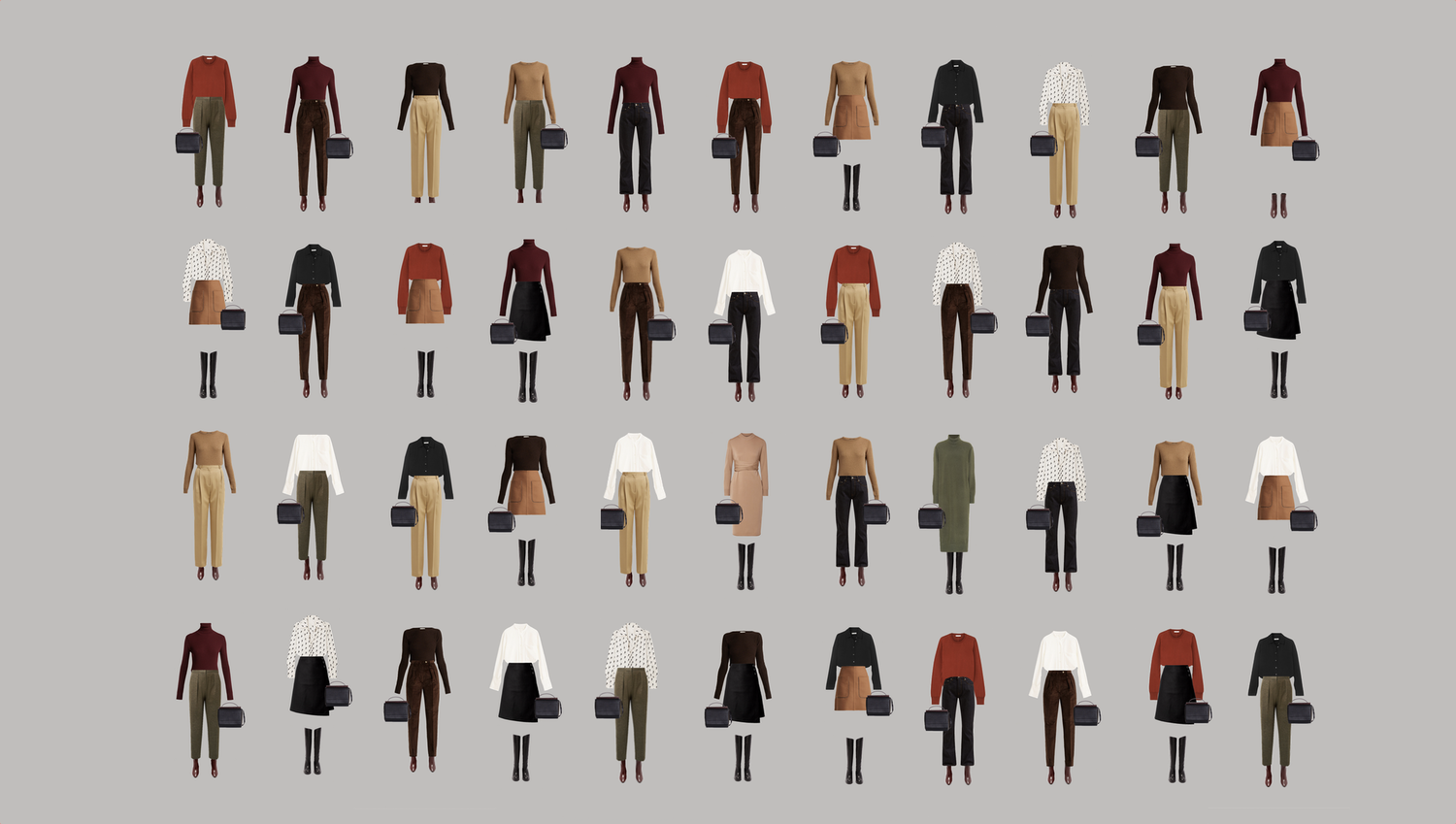
Four Wardrobe Mistakes We Can All Fix
Our wardrobes may evolve with us, but it can be tricky to have one that reflects our present needs, style and even size. Outside influences – including trends and those ever-present pesky sales – lead to us ending up with a bunch of clothes that just don’t go well together. All too often we buy items we wear just a couple of times and then regret buying them. But don’t fear – help is at hand! Daria Andronescu from Wonder Wardrobe has a few top tips to stop you making those mistakes, right now.
Mistake 1 // Keeping everything you’ve ever bought, all in one place
I’m not an advocate of simply discarding things as it creates even more waste – so before you start throwing clothes away please consider alternatives such as donating, repurposing, selling or recycling. Now, decluttering your wardrobe has to come from a place of clarity. First of all, you don’t have to keep all the clothes you do wear in your wardrobe. Revise your wardrobe by dividing the clothes into seasons and rotating the clothes you have. If you notice some of the clothes don’t make the cut for any season, set them aside for repurposing. Having a seasonal rotation system lets you refresh your wardrobe every 3-4 months.
Think of each season as a specific amount of outfits created from clothes you already have. Before each season, take all your clothes and shoes out of storage and start mixing and matching what you have with more recent purchases, to try find as many outfit combinations as you need. If some of the pieces or outfits are missing something, you might need to add new items that will go well with the clothes you’ve selected for next season. After you’ve created your interchangeable outfits, put the rest of your clothes and shoes away until next season. This rotating system will increase the lifespan of your clothes and it keep you entertained for longer!
Mistake 2 // Buying on impulse
You’re out-and-about and an item grabs your eye. Or you’ve had a rough day at work and need to blow off some steam. The dopamine your brain seeks is very easily released by buying something new. Unfortunately, the rush only lasts until you get home and realize the item you bought doesn’t fit with much of the stuff you already own. We’ve all been there, right? That’s why I find it useful to have both a planned budget for the season and a visual guide of my wardrobe.
The visual guide can be put together by simply taking pictures of all the clothes you have for that season and pairing them into outfits. The more interchangeable your items are, the more outfits you will have, and having your wardrobe on your smartphone makes it super-easy to fight impulse buying (or at least know if it will add any value to what you already own). But, once you see how many outfits you already have, my guess is you’ll realise you won’t need to spend more money on random items.
Thinking in terms of single purchases instead of outfits leads to much of the waste produced by the world of fast fashion.
Mistake 3 // Buying separate items instead of making outfits
This particular mistake is closely connected to impulse buying. Thinking in terms of single purchases instead of outfits leads to much of the waste produced by the world of fast fashion today – these single items you buy are the ones you’ll wear the least, because they don’t go with anything else you have. If that’s the case, chances are you’ll have to buy new things to go with them – and not many people can afford to base an entire new outfit around a single item.
The easy way to guard against this mistake is to make sure that everything new you buy fits nicely with most of your clothes – and ideally with all your clothes. The easy way to do this is to keep track of your seasonal outfits – just like with impulse shopping, seeing how a new item fits with your existing wardrobe will ensure your purchase will last you a long time. New things you buy should bring more ways to wear the outfits you already have – not create more styling chaos.
Mistake 4 // Falling into the basics-only trap
Personal expression can be hard to figure out. In a world where we’re bombarded with trends, it’s easy to start questioning our own sense of style and end up going for the safest solution: the basic wardrobe. Many people think that once they have a basic wardrobe, comprised of a few monochromatic pieces, everything else they buy in the future will go well with what they already have. But this doesn’t allow for the joy we feel when we wear a special piece that communicates more about us be through an original cut, colour or material.
My advice is to ensure you have a healthy mix of basics (or, as I prefer to call them, ‘essentials’) alongside more unique statement pieces that help you express your personality. Only you know how many essentials vs statement pieces you need – and you can find out by doing this simple exercise. Lay all your clothes out and start dividing them into two piles. What are your statements? These should make you feel happier, stronger and more confident when you wear them. And what are your essentials? These should complement your statement pieces, and allow you to create multiple outfits. If you think about your wardrobe as a collection of outfits, not separate pieces, you’ll slowly but surely end up with a truly personal, interchangeable wardrobe.


